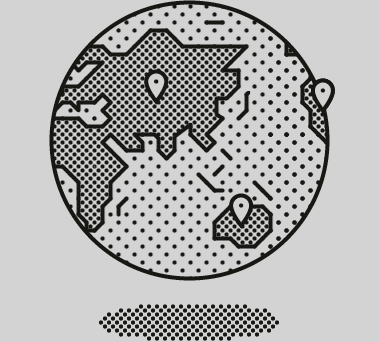Australia (Queensland)
“Imagine if you could take billions of tonnes of carbon dioxide from the atmosphere every year, safely, effectively, economically and immediately,” says carbon-gathering cattle-rancher Tony Lovell. “Imagine if you could do it in a way that also increases biodiversity, boosts food security, reverses the advance of the desert and improves rural communities.”
Australia has many advantages for low-cost, grass-fed beef production: disease-free herds, year-round grazing, reliable infrastructure, large properties, competitive land prices and good access to markets. It is well-positioned to serve the rapid growth in demand for red meat from China and other fast-growing Asian economies.
With the right management, raising cattle on pastures offers the lowest-cost method of beef production. These systems make the most of what nature provides for free – sunlight, rainfall, soils and the photosynthetic power of plants – rather than relying on purchased grains. There is a growing scientific evidence of the health benefits of grass-fed meat, which is leading to increased consumer demand.
The SLM Australia Livestock Fund acquires properties and implements a management process known as ‘holistic planned grazing’. This involves dividing land into smaller paddocks, putting cattle in large herds, and moving them frequently across the property. It provides a decision-making framework that allows managers to vary the size of herds and the frequency of herd movements according to seasonal conditions. The land benefits from concentrated animal impact, and then long periods of rest, which mimics the behaviour of grazing animals in natural grassland ecosystems.
Some commentators worry that cattle burping methane (another potent greenhouse gas) into the sky is a major challenge to the climate and call for us to relinquish meat eating. Methane is indeed twenty-three times more potent than CO2 as a greenhouse gas and the UN estimates that livestock contribute eighty-six million tonnes of it to the atmosphere every year.
But getting rid of cattle could end up being a disaster. It’s not that we have too many cattle, it’s that we have too little grass. The soil needs the grass if it is to become richer in humus and therefore carbon. The grass needs animals if it’s not to die from undergrazing. Working correctly together, the system is a huge natural ‘carbon pump’ that can take massive quantities of CO2 from the sky.
The SLM co-founder has raised a whopping $100 million for regenerative cattle ranching in Australia. The goals of the fund are to increase carrying capacity and to reduce the costs of production, thereby building a profitable, sustainable cattle operation. The grazing process is also expected to increase soil carbon, improve water cycles and enhance biodiversity.
They also have camels, which are almost a ruminant like a cow. There are a number of reasons, all based on increasing biodiversity. Camels are mainly browsers, while cattle are mainly grazers. They will enthusiastically eat a lot of the plants that cattle won’t, and can access feed up to three metres or more above the ground. Managed properly they are great tools to help SLM profitably leave its land in better condition.
In Mark Stevenson’s ‘We Do Things Differently‘ Lovell took the author to a string of farms that are redefining the way SLM Australia Livestock Fund think about agriculture. ► Download the whole chapter for free.
FutureHero interview ► Tony Lovell: 5 billion hectares of hope.
Project leader
Tony Lovell, co-founder
Support the Atlas
We want the Atlas of the Future media platform and our event to be available to everybody, everywhere for free – always. Fancy helping us spread stories of hope and optimism to create a better tomorrow? For those able, we'd be grateful for any donation.
- Please support the Atlas here
- Thank you!




